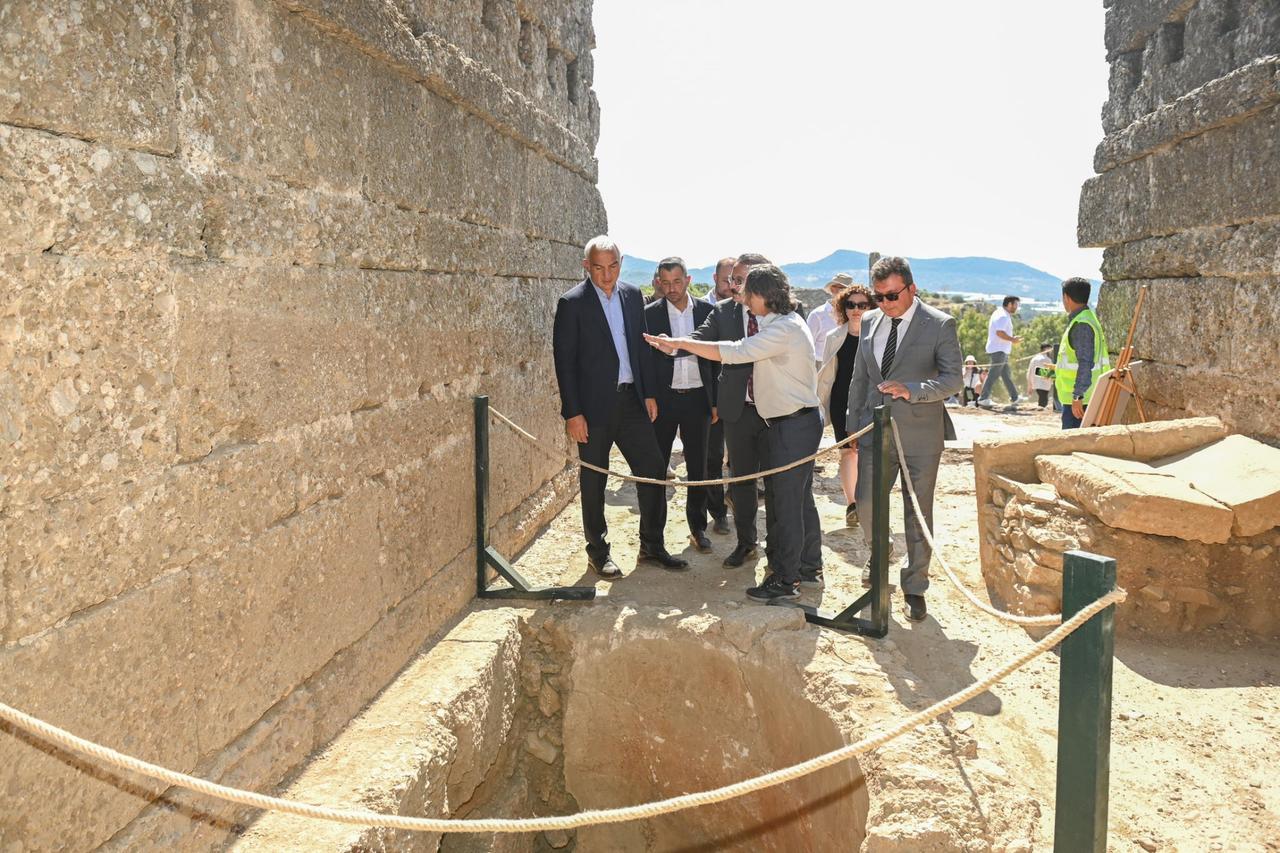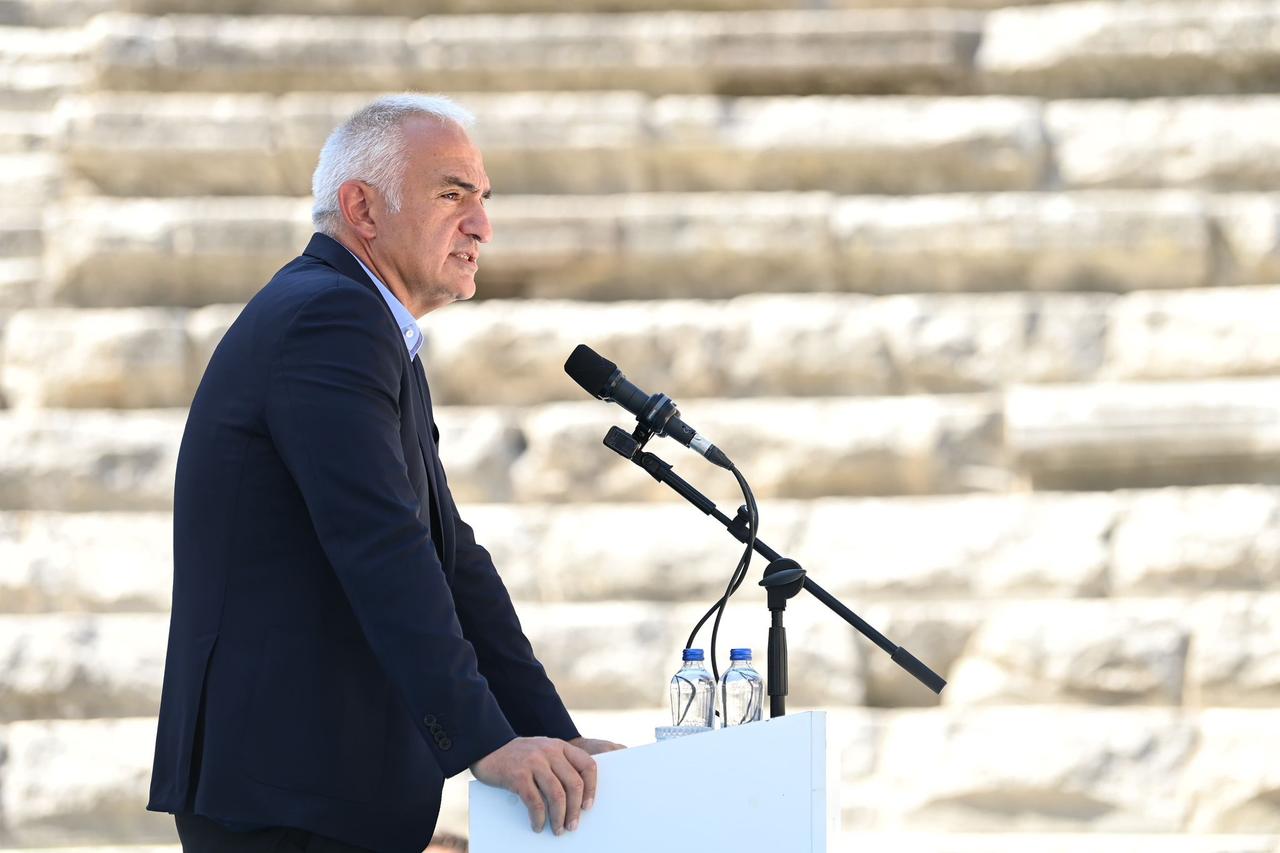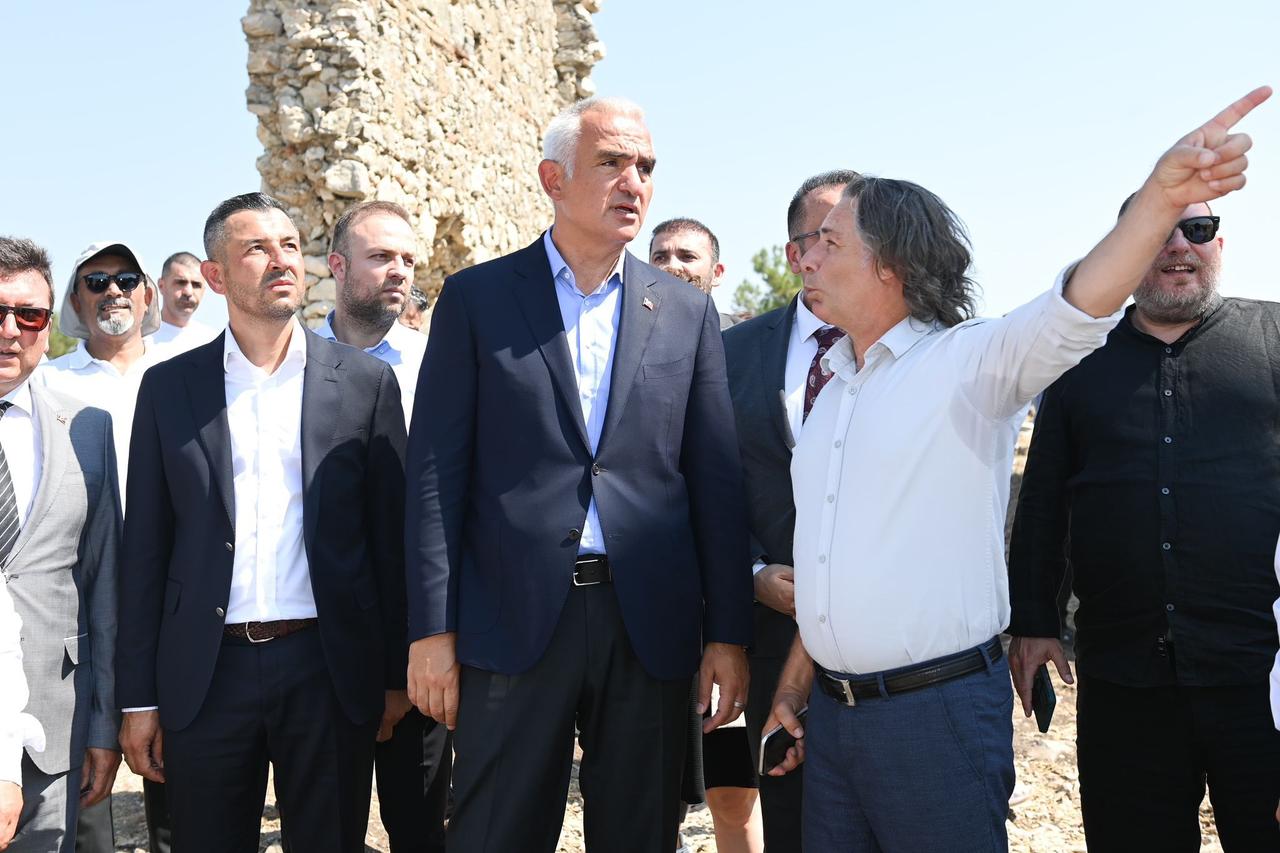
Türkiye’s Minister of Culture and Tourism Mehmet Nuri Ersoy recently unveiled the latest progress at the ancient Roman city of Aspendos as part of the national “Heritage for the Future” initiative. The project, launched in 2023 at Ephesus and quickly expanded to 251 excavation sites, aims to preserve and revitalize Türkiye’s vast cultural heritage.
While addressing the media, Ersoy opened by expressing condolences to those affected by the recent forest fire in Seyitgazi, where some citizens lost their lives during firefighting efforts.
Ersoy emphasized that the Aspendos works go far beyond routine excavation. The goal, he noted, is to uncover the ancient city, preserve it through restoration and lighting, and hand it down to future generations. “We are lifting the layers of time from Aspendos, bringing its past into the present, and preparing it as a legacy for the future,” he said.

Describing Heritage for the Future as more than an excavation campaign, Ersoy framed it as a comprehensive cultural revival. The initiative combines restoration, conservation, infrastructure, and visitor engagement—from museums to signage to nighttime accessibility.
Calling it “a nationalization movement in Turkish archaeology,” Ersoy noted the project’s scope: to fully reclaim and interpret the legacy of all civilizations that left their mark on these lands, from Neolithic sites like Gobeklitepe to Roman cities like Ephesus, guided by Turkish scientific leadership. He also underlined that the state is now delivering resources to archaeological sites at an unprecedented level in Türkiye’s history.
One of the flagship sites under this initiative, Aspendos, has seen its excavation zone grow dramatically. From just 580 square meters before 2023, the current active area now covers 3,800 square meters, with a target of 13,500 square meters by 2025.
Traditionally known for its well-preserved Roman theater, Aspendos is now revealing its larger urban fabric. Since 2024, teams have been excavating and restoring 13 distinct zones, including the Agora and its surrounding buildings. Finds include a two-story shopping complex with 15 shops and intricate mosaics, as well as key civic structures such as a municipal office and a sculptor’s workshop.
Among the standout discoveries, three artifacts have drawn special attention. The first is a striking 40 cm-tall head of a Roman emperor, dated to the mid-third century A.D., believed to belong to a statue over 2.5 meters in height.
The second is a bust from the Early Roman Imperial period, thought to have been re-carved from a full-length statue, possibly of a captured figure next to an emperor. Evidence of reworking is visible in the incomplete carving marks on the head and shoulders.
The third is an almost complete statue of Hermes, messenger of the gods in Greek mythology. Now reassembled after restoration, the sculpture includes a cloak, staff, coin purse, ram figure, and an inscribed base.
The project also features a rapidly growing “night museum” program. In 2024 alone, over 400,000 people visited 27 sites across Türkiye after dark. Thanks to specialized lighting, ancient ruins like Aspendos are now accessible and visually striking at night.

Ersoy highlighted ongoing improvements to enhance the visitor experience. New welcome centers are being built, and signage, walking routes, and access points are being updated to better guide visitors.
The “Heritage for the Future” project has also become a significant employer. As of 2024, it has created jobs for over 5,000 people, including 2,000 specialists. Ersoy concluded by affirming that the government’s commitment will continue.